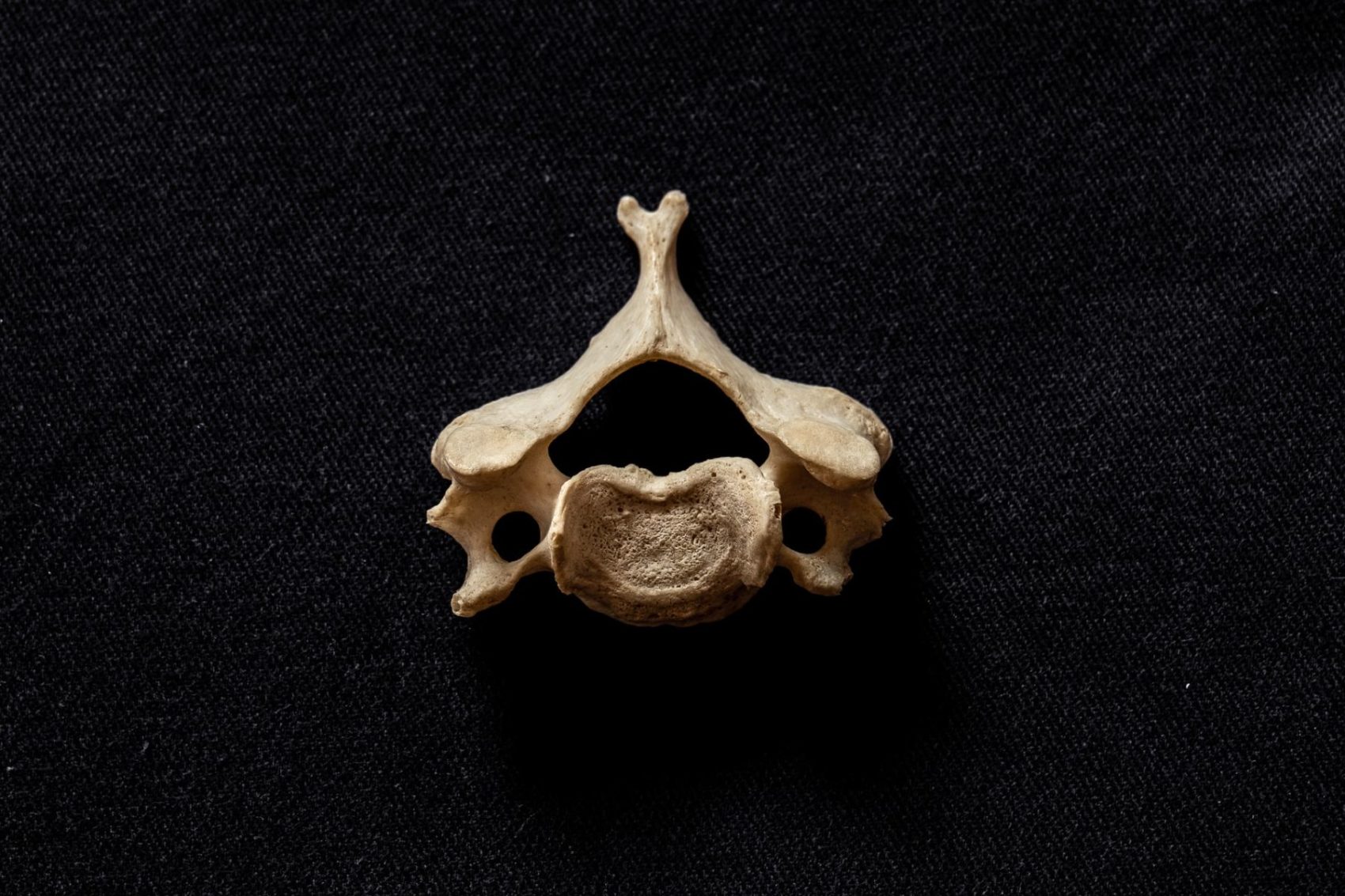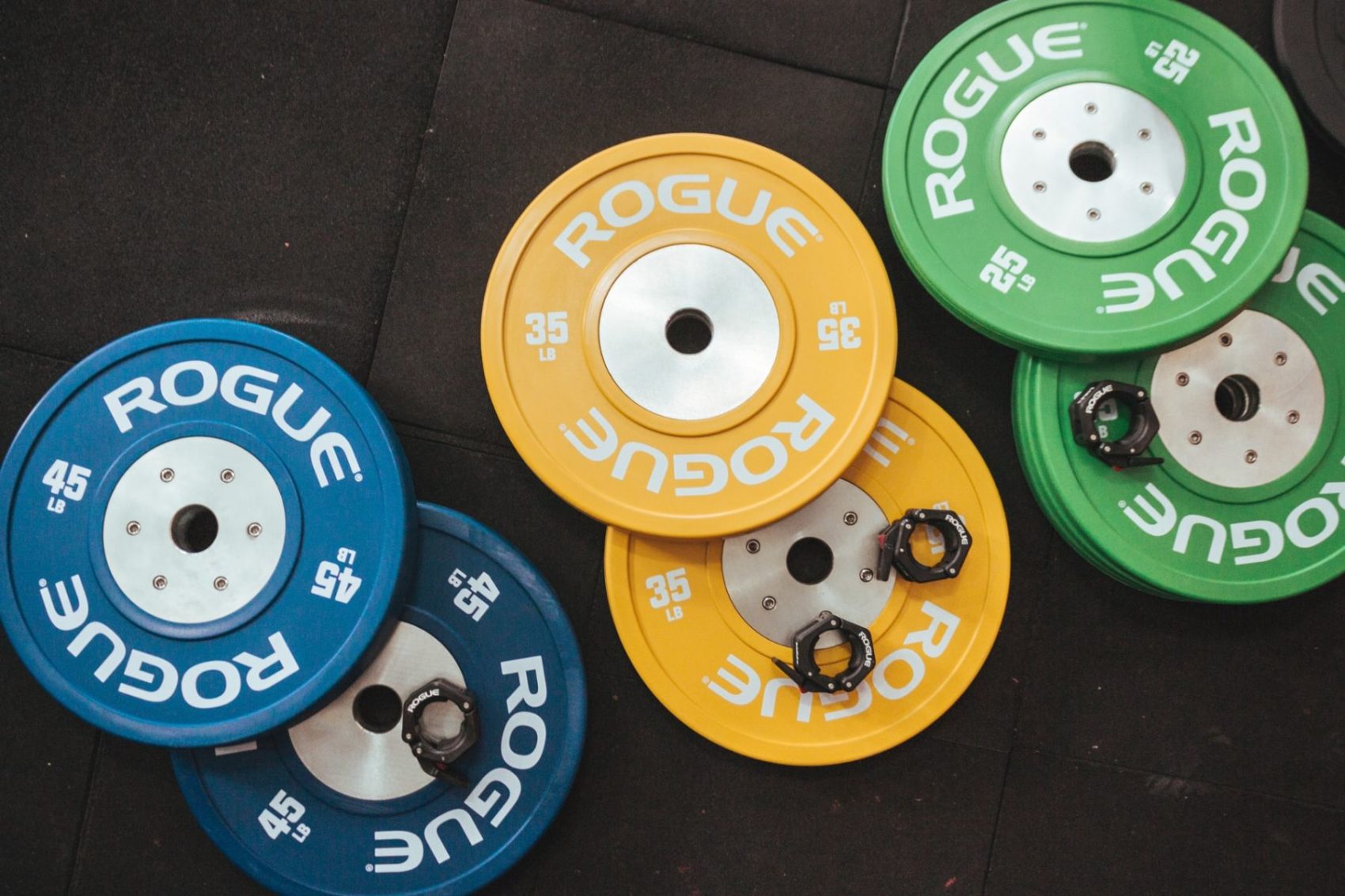Neck Pain seems to be part of modern culture ranging from occasional neck stiffness all up to full-fledged pain or even the inability to move on some days. If I’d ask my coworkers a day how it’s going, I could bet my lunch that at least one would answer with neck pains. I bet you can relate to that, too!
So let’s address the problem at the source and get a deep understanding of why neck pain occurs, what the most common triggers are, and how we can address it. In fact, the routine at the end is a real feel-good mobility routine for everyday use. I do it every day after waking up, or after prolonged times at the laptop, and really crave it especially after handstands.
So without any further detours, let’s get into the fascinating topic of our neck – the tree trunk of our thinking central.
An anatomical Overview of your Neck
Neck Bones
The neck is a very complex body part, fortunately the bony structure is very simple!
It consists of 7 vertebrae1. That’s it. Plus, the lonely hyoid bone in your throat. What’s interesting is the different shapes of your first two vertebrae.efn_note] Your cervical spine consists of 7, your thoracic of 12, your lumbar of 4-6, your sacral of 4-5, and your coccygeal spine of 1-5 different vertebrae. So mostly a human has 24 spinal bones + the sacral bone + the coccygeal bone.[/eal_note] :
- The first also called ‘Atlas‘ – like the mythological Greek giant carrying the globe – is pretty flat, has a huge hole, and many upward connections that act as a fundament for your cranium.
- The second one called ‘Axis‘ – because the name equals exactly the function of this dude – has a pin. The Atlas sits onto this pin. What a genius mother nature is!
Neck Muscles
The Neck Muscles are the more complex part – plus there are many other passive structures within your throat and surrounding the spine. But let’s not overcomplicate the matter here! We’re in to get an overview that shall aid us in understanding the mechanisms, not sitting in an anatomical reading.
You can group your neck muscles into 3 groups:
- The anterior (frontal), posterior (backward) and lateral (left + right) muscles.
- Each of these groups further divides itself into many other groups separated by their specific functions.
Important muscles to hear of, which often get thrown in the round when someone talks of neck stiffness are both sternocliadomastoidea (SCM), the trapezius, the three scalenus muscles, and the M. platysma. These often get very stiff and can benefit from specific movement or soft-tissue release.
- The Scalene muscles and SCM’s are lateral muscles responsible for neck flexion and side bending. You probably massaged the SCM yet. They’re the meaty cable-like muscles next to your Adam’s apple.
- The M. Platysma is a muscle that spans the entire frontal side of your throat. It is responsible for facial expressions and connects your collar bones to your jaws.
The Functions

Alright now that we know of the bones and muscles, let’s look quickly into the most important functions of your neck.
- First of all, it connects your trunk to your head and therefore has many logistic functions, like blood, lymph fluid, food, and air.
- It is responsible for voice creation and a very exposed area.
But what interests us more are the necks functions related to movement:
- Cervical Flexion
- Cervical Extension
- Cervical Rotation
- Cervical Side Bending
- and all of these in combinations with each other
Nonetheless, besides these active movement patterns its main function is to create a stable environment for your head, ears, and eyes. Otherwise, you would have a hard time balancing and staying upright.
For lots of more content on neck anatomy read through this introductory post of the NCBI or even buy yourself an anatomy book. I believe everyone should own at least one. I like Gray’s Anatomy* – ehm not the girlish series – and the Wynn Kapit’s anatomy coloring book*.
Why are Neck Pain and Stiffness that common nowadays?

As we’ve seen above the neck is very complex, there are plenty of neck muscles and this very mobile body part fulfills lots of functions. Therefore the short answer is – we lack these movement-related functions. Often this is true. #mobilezombiegeneration
The long answer is more complex though. While many neck issues are movement-related, some may not be. Nonetheless, this post shall encompass the movement-related neck issues and give everyone a guide to work on their neck stiffness.
Our necks often get sore and stiff or we even experience neck pain because we use it seldom and when we use it we stay in one posture for a long time – the desktop posture:
- Forward-facing chin
- Flexed cervical spine
- and slouched thoracic spine
Regarding that your head weighs a lot2, this posture places a lot of strain on all these tiny muscles. While this is initially nothing bad, it gets bad when you stay within this posture for a long time – accumulated as well as in one part.
We humans are built to move – it is exactly the same with your neck. Just think of yourself boarding a plane from Bangkok to Berlin. Afterwards your lumbar spine will feel at least sore. If you stay in roughly the same posture for 6 hours a day at work your neck takes a hard beating, high-frequently. It’s no wonder neck pain arises and your body demands a postural change.
So how can we solve this issue?
Solve your Issues with these 5′ Neck Mobility Exercises
First of all, the best suggestion would be to try to cut down on screen time. If that’s not realizable, the next second-best step is to try to change your posture more often and therefore expose your neck to a greater variety of positions.
Nonetheless, try to at least take a break each hour from your screen for 5 minutes – go for a walk, do the below neck routine, talk to your coworkers, grab coffee #9, but try avoiding the same posture and do not opt-in for instagramming the *** out of these 5 minutes.
Alrighty mighty, let’s start with the routine without further detours!
Neck Circles (10r)
Neck Circles are simply a feel-good exercise. They’re easy, don’t require anything, and feel awesome. The only caution you should adhere to is to learn the movement first and always go slow. Never rush it and work against pain. That way you’ll secure the tiny structures in your neck and cause no harm.
Perform them standing or seated and think of drawing a circle with your chin. You can see in this video how this exercise should look like.
Side Rotation (10r + 15s Isometric)
The next movement on our list is rotation. This movement is pretty simple:
- Sit straight and tuck your chin lightly
- turn either to the left or right side until you feel a strong contraction
Perform this movement for 10 reps and hold a 15s isometric on the last rep. Therefore push your head against your fist. Try to start with a slight contraction and ramp up the intensity over the course of these 15s. At the end, you should be at an ~80% contraction
Seated Side Bend (10r + 15s Isometric)
The side-bending motion is pretty similar:
- Sit straight and tuck your chin lightly
- Bend your heck to one side until you feel a strong stretch.
Repeat for 10 reps per side and hold the same isometric as above, pushing your head against your fist while applying resistance. As always go slow and stay in control.
Quadruped Forward Push (10r + 15s Isometric)

Next, go into a quadruped position on the floor. If you’re at the office you can perform this movement seated, too. From here you push your head towards the ground without moving your chest. Indeed, this can be a bit tricky at first.
The important part of this motion is the pullback up into normal. You should feel this exercise on the back of your neck. As previous perform for 10 reps and hold the top position for 15s on the last rep.
Quadruped Tucked Side-Bend (10r)
- Stay in the same quadruped position
- Tuck your chin and side-bend your head.
This should feel different from the basic side bends. You can spice this movement up by also adding rotation if you’re familiar with it.
If quadrupling is no option, go for a seated variation to make sure you don’t look like a weird antisocial human being playing a dog at the office.
Quadruped Full-Range Neck Curls (10r)
Lastly you’re tucking your chin fully to your chest while in that quadruped position. From there you go all the way back into extension until you look slightly to the ceiling. Make sure that the only part moving is your neck, not the other parts of your spine.
As a word of caution, go slow on this one and try not to exaggerate the extended position that much. In fact the first times doing that movement it might feel like your traps are going to cramp.
You can perform this motion also seated or lying on your back.
| Neck Circles | Side Rotation | Side Bend | Forward Push | Tucked Side-Bend | Neck Curls |
|---|---|---|---|---|---|
| 5-8 slow reps per side | 10 reps per side + 15s isometric on last rep | 10 reps per side + 15s isometric on last rep | 10 reps + 15s isometric on last rep | 10 reps | 10 reps |
| Slow and Controlled | Feel the Contractionon each rep | Feel the Stretch on each rep | Avoid moving your chest | Avoid moving your chest | Slow and Controlled |
One additional Neck Mobility Exercise for your Training!
The Warrior’s Secret: Neck Bridges
This exercise might look awkward especially in our modern ‘fear of breaking the body’ culture. And is indeed no position to rush, like you wouldn’t rush a jefferson curl or heavy deadlift either.
This exercise is heavily utilized in wrestling and combat to strengthen the necks of the athletes. Historically it was used to reducing the chance the enemy could break your neck while in close combat.
Carefully build up it can help you get rid of neck pain and build an insanely strong neck. For an in-depth guide on this exercise and how to safely build it up have a look at this great post by Anthony Mychal.
Are Neck Circles bad?
There were a few orthopedic ‘experts” discussing potential damages neck circles could provoke. The worse one that came up was the apocalyptic rupture of one of your vertebral arteries aka near-instant death without any help. This never happened world-wide. Nonetheless, this is the reason where my ‘slow and controlled’ preaching comes from. It is an awesome exercise, but better be safe than sorry. Therefore make a break when you experience tingles or feel unwell.
What underlines this issue is neck cracks. While neck cracks can sound awfully – they will get better. I experience these, too. In fact, my neck feels like it needs to crack all the time. But never anything bad happened to me, rather the opposite.
Alright, that’s it from my side for today! Thanks for staying with me until here, mate. My top tip for all you relentlessly dedicated readers is to spice up your day with more variety of neck movements and building a strong neck in general, as that’s what will keep this precious body part healthy. It’s like many other body parts.
Read you and have a healthy day,

Footnotes
- For more info in great images have a look at this great post by spine health.
- Roughly 5-8kg depending on your overall stubbornness.



